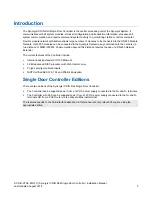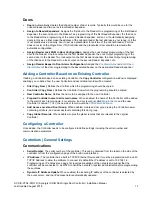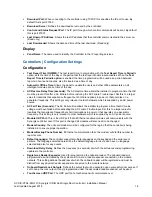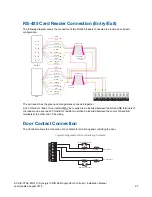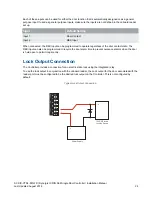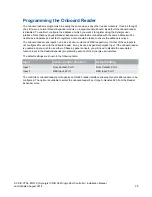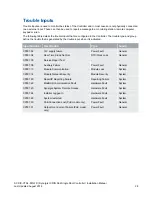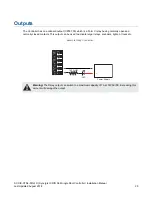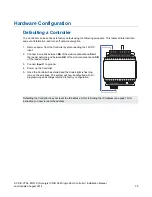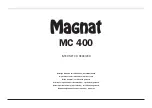
SY-SIX-CTRL-DIN-1D | Synergis IX DIN Rail Single Door Controller | Installation Manual
Last Updated August 2018
16
4. Once added, the Controller will require configuration (see page 17) to define settings including the serial
number and communication parameters.
You may need to restart the services to bring the Controller online. Select the services option from the Control
Panel and restart the Synergis services.
Adding a Controller with Default Records
If adding a Controller with default records, the
Add Controller
configuration window is displayed, enabling
you to automatically add the expander modules, inputs, outputs and doors that your site will be using. All of
these records can be edited later on, deleted, and/or additional new records added.
General
Name
: Defines the name of the Controller to be used as a reference when programming the system.
Count
: Defines the number of Controllers to be added. If more than one Controller is added, the
subsequent Controllers are assigned default names that can be edited later.
Controller
Inputs
: Defines the number of onboard Controller inputs that you intend to use. Note that the Single Door
(1D) Controller has only 2 onboard inputs, so the number selected here should only be set to 2. If you are
using the onboard readers then some of the inputs may be used for their reader functions and not be
required. By default the number of inputs will be set to 16 as older versions of the Controller hardware
have 16 onboard inputs.
Outputs
: The Single Door (1D) Controller has 1 onboard output. By default the number of outputs is set
to 4 for compatibility with older Controller hardware and should be left set to four. When the outputs are
created they are assigned sequential output numbers 1 to 4. On the Single Door (1D) Controller the Relay
1 is output #3. Outputs #1, #2, and #4 are generated to maintain compatibility with older hardware and do
not exist on the Single Door (1D) Controller.
Add Trouble Inputs
: Select this option to automatically add the Controller trouble inputs. Some trouble
inputs will not be relevant to the DIN Rail Controller and can later be deleted. For further details refer to
the section on trouble inputs.
Keypads, Input Expanders, Reader Expanders, and Output
Expanders
Use these fields to add the relevant number of expanders that are connected to the module network of the
site, and the number of inputs, outputs and trouble inputs that will be used. Note that if the onboard reader is
used then it should be included in the number of Reader Expanders so that programming fields will be created
for it. Refer to the Programming the Onboard Reader for further details.
Options
Create "Installer" Menu Group
: Creates a menu group with every menu enabled.
Create Default Door Types
: Creates 4 default door types -
Card
,
Card and PIN
,
Card or PIN
, and
PIN
only
- that define how a door will operate (such as passback and reading mode).
Create Default Input Types
: Creates 10 default input types -
Instant
,
Instant Force
,
Delay
,
Delay Follow
,
Delay Follow Force
,
Trouble Silent
,
Trouble Bell
,
Fire
,
Delay Force
, and
24 Hour Alarm
- that define how
an input will operate in an area.
Create Floor Plan
: Create a floor plan including all inputs and outputs. This is useful for small sites with
only a few inputs and outputs. For larger sites it is generally better to create the floor plans manually.




